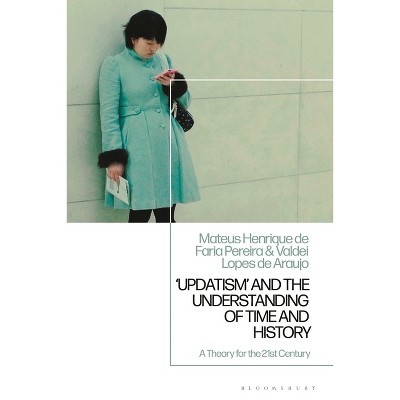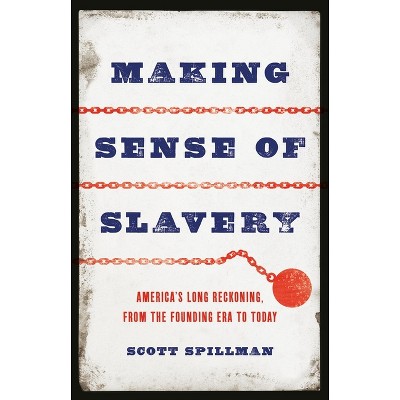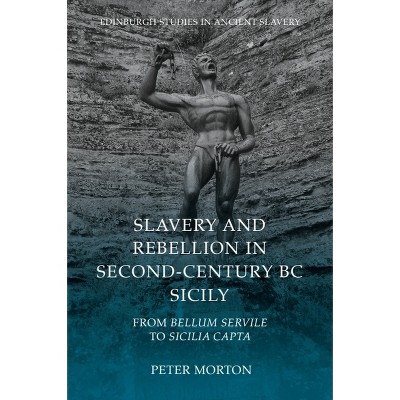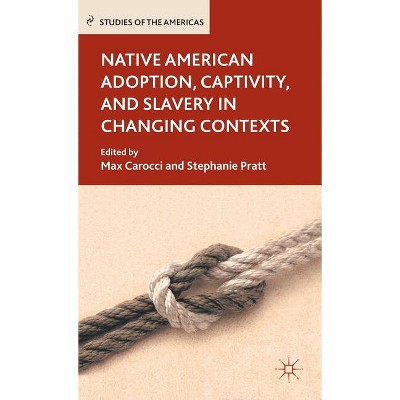$100.00 when purchased online
Target Online store #3991
About this item
Highlights
- Exploring notions of history, collective memory, cultural memory, public memory, official memory, and public history, Slavery in the Age of Memory: Engaging the Past explains how ordinary citizens, social groups, governments and institutions engage with the past of slavery and the Atlantic slave trade.
- About the Author: Ana Lucia Araujo is Professor of History at Howard University, USA.
- 272 Pages
- History, Historiography
Description
About the Book
"Exploring notions of history, collective memory, cultural memory, public memory, official memory, and public history, Slavery in the Age of Memory: Engaging the Past explains how ordinary citizens, social groups, governments and institutions engage with the past of slavery and the Atlantic slave trade. It illuminates how and why over the last five decades the debates about slavery have become so relevant in the societies where slavery existed and which participated in the Atlantic slave trade. The book draws on a variety of case studies to investigate its central questions. How have social actors and groups in Europe, Africa and the Americas engaged with the slave past of their societies? Are there are any relations between the demands to rename streets of Liverpool in England and the protests to take down Confederate monuments in the United States? How have black and white social actors and scholars influenced the ways slavery is represented in George Washington's Mount Vernon and Thomas Jefferson's Monticello in the United States?How do slave cemeteries in Brazil and the United States and the walls of names of Whitney Plantation speak to other initiatives honoring enslaved people in England and South Africa? What shared problems and goals have led to the creation of the International Slavery Museum in Liverpool and the National Museum of African American History and Culture in Washington DC? Why have artists used their works to confront the debates about slavery and its legacies? The important debates addressed in this book resonate in the present day. Arguing that memory of slavery is racialized and gendered, the book shows that more than just attempts to come to terms with the past, debates about slavery are associated with the persistent racial inequalities, racism, and white supremacy which still shape societies where slavery existed. Slavery in the Age of Memory: Engaging the Past is thus a vital resource for students and scholars of the Atlantic world, the history of slavery and public history"--Book Synopsis
Exploring notions of history, collective memory, cultural memory, public memory, official memory, and public history, Slavery in the Age of Memory: Engaging the Past explains how ordinary citizens, social groups, governments and institutions engage with the past of slavery and the Atlantic slave trade. It illuminates how and why over the last five decades the debates about slavery have become so relevant in the societies where slavery existed and which participated in the Atlantic slave trade.The book draws on a variety of case studies to investigate its central questions. How have social actors and groups in Europe, Africa and the Americas engaged with the slave past of their societies? Are there are any relations between the demands to rename streets of Liverpool in England and the protests to take down Confederate monuments in the United States? How have black and white social actors and scholars influenced the ways slavery is represented in George Washington's Mount Vernon and Thomas Jefferson's Monticello in the United States?How do slave cemeteries in Brazil and the United States and the walls of names of Whitney Plantation speak to other initiatives honoring enslaved people in England and South Africa? What shared problems and goals have led to the creation of the International Slavery Museum in Liverpool and the National Museum of African American History and Culture in Washington DC? Why have artists used their works to confront the debates about slavery and its legacies?
The important debates addressed in this book resonate in the present day. Arguing that memory of slavery is racialized and gendered, the book shows that more than just attempts to come to terms with the past, debates about slavery are associated with the persistent racial inequalities, racism, and white supremacy which still shape societies where slavery existed. Slavery in the Age of Memory: Engaging the Past is thus a vital resource for students and scholars of the Atlantic world, the history of slavery and public history.
Review Quotes
An important, comprehensive and insightful analysis of 'modalities of memory' of slavery, this book is multi-layered, versatile and compelling. Revealing herself once again as one of the foremost international experts in the field, Professor Araujo meets and surpasses her long-established reputation for rigorous investigation, critical depth and astute observations.
Stephen Small, Professor of African American Studies, University of California, Berkeley, USA
Drawing on a wide array of sources, Ana Lucia Araujo explores the ways that slavery and the Atlantic slave trade have been remembered and commemorated across the globe. From the Americas to Europe and Africa, Slavery in the Age of Memory demonstrates that people and institutions are still wrestling with slavery's past. This book is timely and necessary.
Erica Armstrong Dunbar, Charles and Mary Beard Professor of History, Rutgers University, USA
The Atlantic system of slavery shaped the characters of all the countries that slavery touched. Richly researched, Slavery in the Age of Memory is a fascinating and necessary look at how former slave societies, from Brazil to Virginia, have tried to process the memory of slavery in the midst of lingering traumas wrought by the institution.
Annette Gordon-Reed, Professor of Law and History, Harvard University, USA
About the Author
Ana Lucia Araujo is Professor of History at Howard University, USA. She is the author of Public Memory of Slavery: Victims and Perpetrators in the South Atlantic World (2010), Shadows of the Slave Past: Memory, Heritage and Slavery (2014), Brazil through French Eyes: A Nineteenth-Century Artist in Brazil (2015) and Reparations for Slavery and the Slave Trade: A Transnational and Comparative History (Bloomsbury, 2017).Dimensions (Overall): 9.21 Inches (H) x 6.14 Inches (W) x .63 Inches (D)
Weight: 1.19 Pounds
Suggested Age: 22 Years and Up
Number of Pages: 272
Genre: History
Sub-Genre: Historiography
Publisher: Bloomsbury Publishing PLC
Format: Hardcover
Author: Ana Lucia Araujo
Language: English
Street Date: October 15, 2020
TCIN: 92316696
UPC: 9781350048485
Item Number (DPCI): 247-31-4281
Origin: Made in the USA or Imported
Shipping details
Estimated ship dimensions: 0.63 inches length x 6.14 inches width x 9.21 inches height
Estimated ship weight: 1.19 pounds
We regret that this item cannot be shipped to PO Boxes.
This item cannot be shipped to the following locations: American Samoa (see also separate entry under AS), Guam (see also separate entry under GU), Northern Mariana Islands, Puerto Rico (see also separate entry under PR), United States Minor Outlying Islands, Virgin Islands, U.S., APO/FPO
Return details
This item can be returned to any Target store or Target.com.
This item must be returned within 90 days of the date it was purchased in store, shipped, delivered by a Shipt shopper, or made ready for pickup.
See the return policy for complete information.
Trending Non-Fiction


$12.54
MSRP $22.00
Save $5 when you spend $25 on select books
4.7 out of 5 stars with 20 ratings


$10.84
MSRP $15.99
Save $5 when you spend $25 on select books
4.9 out of 5 stars with 12 ratings

$20.75 - $21.99
MSRP $21.99 - $32.50 Lower price on select items
Save $5 when you spend $25 on select books on select items
4.6 out of 5 stars with 9 ratings

$18.71
MSRP $34.99
Save $5 when you spend $25 on select books
5 out of 5 stars with 9 ratings






